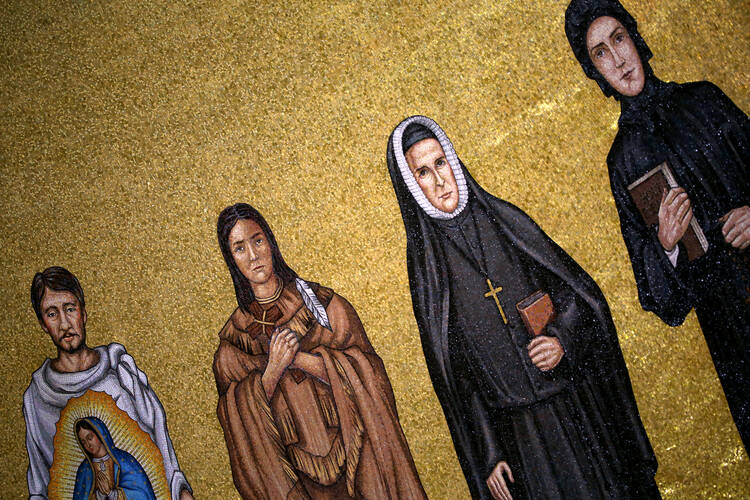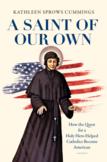Review: Modern saint-making reflects contemporary Catholic identity
The French writer Léon Bloy once famously remarked that the only tragedy in life is to not have been a saint. But most of us will not become saints, at least not in the formal sense. As Kathleen Sprows Cummings shows in her study of modern saint-making, A Saint of Our Own, canonization is about much more than personal sanctity. Although a superabundance of virtue and holiness may be a prerequisite, necessary but insufficient, sainthood is in many ways a practical enterprise that reflects Catholicism’s contemporary sense of self in the world.
Saints, Catholics learn from a very young age—through both formal catechism and the osmosis of family and parish traditions—are simultaneously exceptional and ordinary: ideals of holiness that awe us, inspire us toward deeper piety and convict us in our moral finitude. They are also thaumaturgical protectors who miraculously cure us of terminal illnesses, keep our loved ones safe during times of war and help us find stuff. Well, technically they’re not the ones who do the healing, but it sure feels like it. They are also essentially mascots of particular causes, places and nations. And as such, they are also subject to ecclesiastical politics.
Saints are simultaneously exceptional and ordinary: ideals of holiness that awe us, inspire us toward deeper piety and convict us in our moral finitude.
As Cummings shows in intricate detail, canonization is painstaking work that requires labor, money, miracles, investigations and no small amount of luck. In the United States, Catholic saints have largely been reflections of what bishops believed to be contemporary ideals of holiness, which evolved over the course of time, in no small part because of the shifting cultural terrain of Catholicism’s relationship to mainstream Protestantism. Kateri Tekakwitha, Elizabeth Ann Seton, John Neumann, Junípero Serra—all are saints whose time came years after their formal causes were established, as their model of virtue matched up with prevailing winds of U.S. Catholic identity.
In Golden, Colo., sits a shrine to St. Frances Xavier Cabrini, a Gilded Age, Italian-born, immigrant missionary who founded the Missionary Sisters of the Sacred Heart of Jesus. Cummings records Cabrini’s remarkable life and cause, which reached its peak with her canonization in 1946 by Pope Pius XI. A devotional cult has developed around Cabrini to match that of more iconic European counterparts like Sts. Thérèse, Francis, Patrick and Joan—to say nothing of the Blessed Mother.
As Cummings notes, our future saints, some of whom have already passed beyond the veil, will disclose to us as much about ourselves and our church as they will about their own heroic virtue.
This article also appeared in print, under the headline “Exception and ordinary,” in the October 28, 2019, issue.









